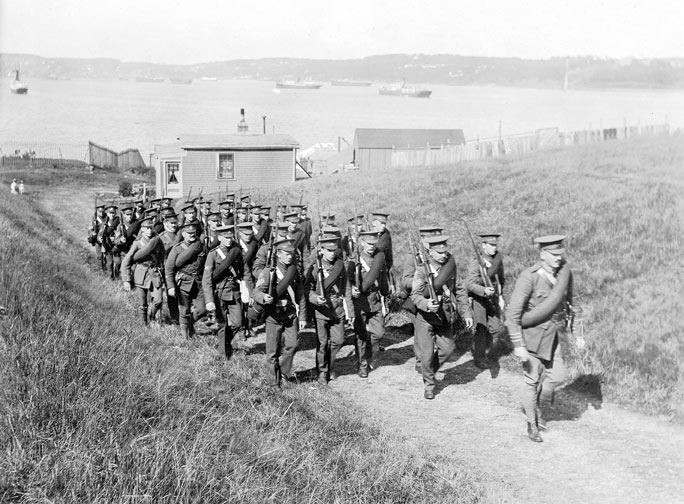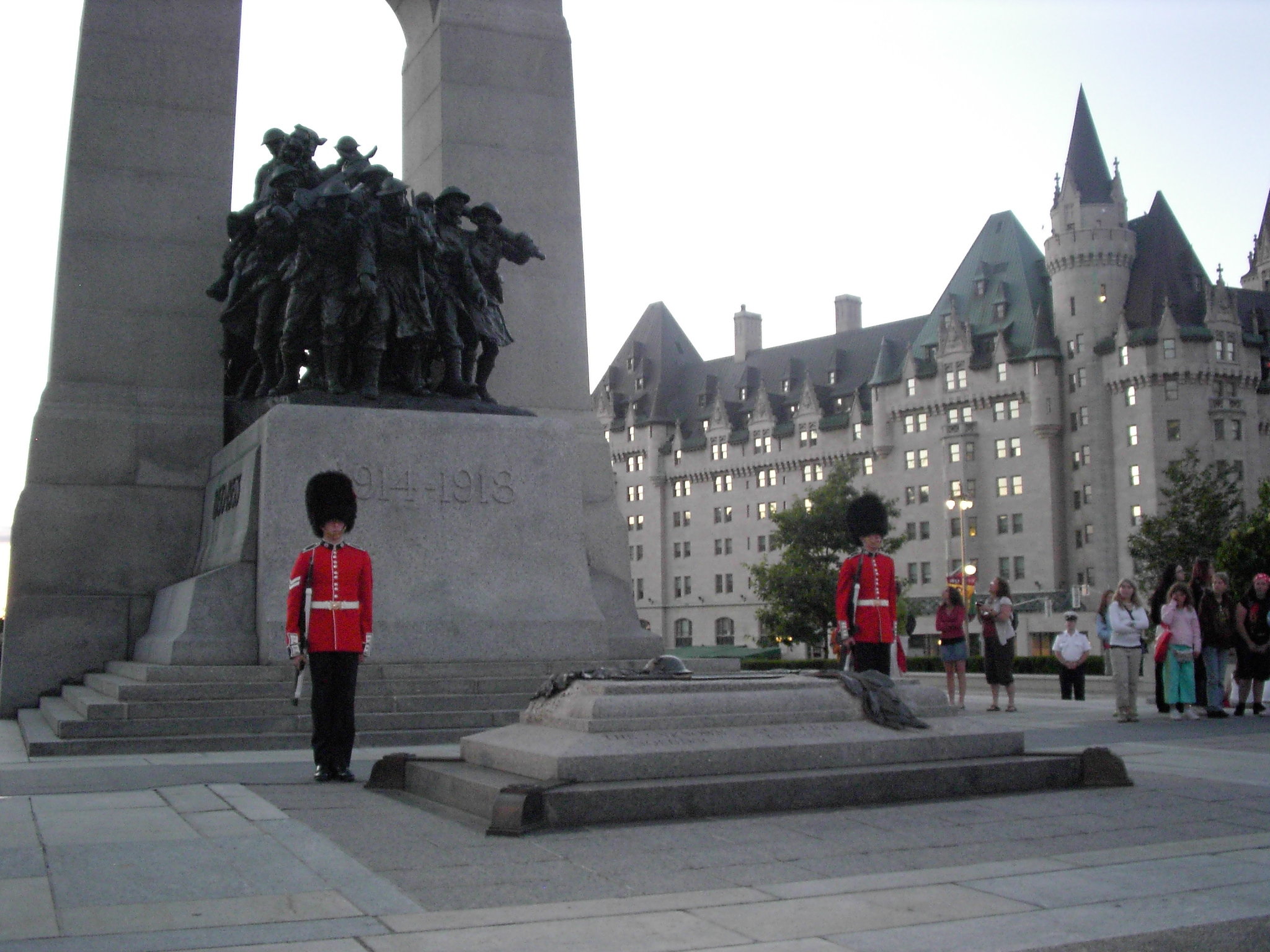|
Precision (march)
''Precision'' is the authorized march of Royal Military College of Canada. The RMC band performs Precision during parades and march pasts, as well as on Ex-Cadet Weekends. History Precision was composed in 1932 by Denise Chabot, wife of Major C. A. Chabot, a Royal Canadian Artillery officer on staff as professor of French at the College at the time. She earned the degree of Associate of the Royal Conservatory of Music and was the president of the Kingston Music Club. ''Precision'' was inspired by "Madelon", one of the popular marching songs sung and whistled by the cadets marching on their way to the Riding School, and the favourite song of the Class of 1932. Mme Chabot improvised a variation on the song, to represent the cadence of the cadets on the march. The composition starts, “We are the gentlemen cadets of RMC We have sworn to love and serve Her Majesty…” Source: Royal Military College of Canada – Review Yearbook (Kingston, Ontario Canada) – Class of 1942 pg. 76 T ... [...More Info...] [...Related Items...] OR: [Wikipedia] [Google] [Baidu] |
March (music)
A march, as a musical genre, is a piece of music with a strong regular rhythm which in origin was expressly written for marching to and most frequently performed by a military band. In mood, marches range from the moving death march in Richard Wagner, Wagner's ''Götterdämmerung'' to the brisk military marches of John Philip Sousa and the martial hymns of the late 19th century. Examples of the varied use of the march can be found in Ludwig van Beethoven, Beethoven's Symphony No. 3 (Beethoven), ''Eroica'' Symphony, in the Three Marches Militaires (Schubert), Marches Militaires of Franz Schubert, in the Marche funèbre in Frédéric Chopin, Chopin's Piano Sonata No. 2 (Chopin), Sonata in B flat minor, the "''Jäger March''" in the by Jean Sibelius, and in the Dead March in George Frideric Handel, Handel's ''Saul (Handel), Saul''. Characteristics Marches can be written in any time signature, but the most common time signatures are , (''alla breve'' , although this may refer to ... [...More Info...] [...Related Items...] OR: [Wikipedia] [Google] [Baidu] |
Royal Military College Of Canada
'') , established = 1876 , type = Military academy , chancellor = Anita Anand ('' la, ex officio, label=none'' as Defence Minister) , principal = Harry Kowal , head_label = Commandant , head = Josée Kurtz , undergrad = 1,160 full-time; 990 part-time , postgrad = 300 full-time , campus = 41-hectare peninsula east of downtown Kingston ( Point Frederick); Waterfront CFB Kingston , language = English, French , free_label = Call signs , free = VE3RMC; VE3RMC-9; VE3RMC-11 , athletics_affiliations = U Sports – OUA MAISA , colours = , sports_nickname = RMC Paladins , mascot = Paladin in scarlet uniform with shield (2009) , website = , footnotes = , city = Kingston, Ontario, Canada , coordinate ... [...More Info...] [...Related Items...] OR: [Wikipedia] [Google] [Baidu] |
Royal Military College Of Canada Bands
The Royal Military College of Canada Bands (also known as the RMC Band) is the official group of bands of the Royal Military College of Canada. The group is composed of four sections: the brass and reed, the pipes and drums, highland dancers, and choristers. Total band membership consists of 105 Officer Cadets from the college. Officer Cadets in the band practice three days a week in the morning on top of attending their individual full-time university programs. The RMC Band plays an active role in the college by providing the music for all parades and military functions, as well as athletic games and student events on the campus. In addition, the band has played provincially and nationally including the Oktoberfest celebration and parade in Kitchener-Waterloo and the Vanier Cup at Toronto's Skydome. The Band has also played in venues across North America including the United States Military Academy, the United States Air Force Academy, the United States Naval Academy, Disne ... [...More Info...] [...Related Items...] OR: [Wikipedia] [Google] [Baidu] |
Royal Canadian Artillery
, colors = The guns of the RCA themselves , colors_label = Colours , march = * Slow march: "Royal Artillery Slow March" * Quick march (dismounted parades): "British Grenadiers/The Voice of the Guns" * Trot past: "Keel Row" * Gallop past (horse artillery only): "Bonnie Dundee" , mascot = , anniversaries = * 1855: Militia Act of 1855 passed by the Parliament of the Province of Canada and creation the first truly Canadian army units * 27 November 1856: first Canadian Artillery unit formed (''Battalion of Montreal Artillery'') * 10 August 1883: ''Regiment of Canadian Artillery'' of the Permanent Active Militia authorized to be formed , equipment = * M101 howitzer#Variants, 105 mm Howitzer, C3 * GIAT LG1, 105 mm Howitzer, LG1 Mk II * M777 howitzer#Canada, 155 mm Howitzer M777C1 , equipment_label = Current weapon systems , battle_honours ... [...More Info...] [...Related Items...] OR: [Wikipedia] [Google] [Baidu] |
Royal Conservatory Of Music
The Royal Conservatory of Music (RCM), branded as The Royal Conservatory, is a non-profit music education institution and performance venue headquartered in Toronto, Ontario, Canada. It was founded in 1886 by Edward Fisher (musician), Edward Fisher as The Toronto Conservatory of Music. In 1947, King George VI incorporated the organization through Royal Charter, royal charter. Its Toronto home was designated a National Historic Sites of Canada, National Historic Site of Canada in 1995, in recognition of the institution's influence on music education in Canada. Tim Price is the current Chair of the Board, and Peter Simon is the President. History Early history The conservatory was founded in 1886 as The Toronto Conservatory of Music and opened in September 1887, located on two floors above a music store at the corner of Dundas Street (Toronto), Dundas Street (Wilton Street) and Yonge Street (at today's Yonge Dundas Square). Its founder Edward Fisher (musician), Edward Fish ... [...More Info...] [...Related Items...] OR: [Wikipedia] [Google] [Baidu] |
Royal Canadian Horse Artillery
The Royal Canadian Horse Artillery is the name given to the regular field artillery units of the Canadian Army. Organization The Regular Force has three RCHA regiments: ; 1st Regiment, Royal Canadian Horse Artillery: this is the descendant of the original batteries of artillery formed in 1871, and is thus the senior Regular unit in the Canadian army. 1 RCHA was forward deployed in Germany as part of Canadian Forces Europe for 25 years between 1967, and the final Canadian withdrawal from Europe in 1993. Currently, this regiment is part of 3rd Canadian Division's 1 Canadian Mechanized Brigade Group. ; 2nd Regiment, Royal Canadian Horse Artillery: 2 RCHA was formed in 1950 for service in the Korean War. 2 RCHA is part of 4th Canadian Division's 2 Canadian Mechanized Brigade Group and is located in Garrison Petawawa. It is composed of two Gun Batteries (D and E), one Surveillance and Target Acquisition Battery (F), a Forward Observation Battery (Y), and its Headquarters Battery ... [...More Info...] [...Related Items...] OR: [Wikipedia] [Google] [Baidu] |
Authorized Marches Of The Canadian Forces
The following is a list of the notable authorized marches for various organisations of the Canadian Armed Forces. The first march listed is the march most commonly performed for that organisation on parade; it is commonly referred to simply as that organisation's "march" or "march past". In addition, many organisations also have additional pieces for slow marches, marches for mounted parades, pipe marches, etc.; they are subsequently listed and footnoted as applicable. Within each grouping, the organisations are listed in their order of precedence, i.e. the order the organisations would march on parade and the order the marches would be played. Military colleges *Royal Military College of Canada - "Precision" composed by Madame Denise Chabot (wife of head of French department); For pipe band: "Alexander Mackenzie" was composed by Pipe Major Don M. Carrigan, who was the College Pipe Major 1973 to 1985 *Royal Military College Saint-Jean - " La marche du Richelieu" composed by Mada ... [...More Info...] [...Related Items...] OR: [Wikipedia] [Google] [Baidu] |
Canadian Military Marches
Canadians (french: Canadiens) are people identified with the country of Canada. This connection may be residential, legal, historical or cultural. For most Canadians, many (or all) of these connections exist and are collectively the source of their being ''Canadian''. Canada is a multilingual and multicultural society home to people of groups of many different ethnic, religious, and national origins, with the majority of the population made up of Old World immigrants and their descendants. Following the initial period of French and then the much larger British colonization, different waves (or peaks) of immigration and settlement of non-indigenous peoples took place over the course of nearly two centuries and continue today. Elements of Indigenous, French, British, and more recent immigrant customs, languages, and religions have combined to form the culture of Canada, and thus a Canadian identity. Canada has also been strongly influenced by its linguistic, geographic, and eco ... [...More Info...] [...Related Items...] OR: [Wikipedia] [Google] [Baidu] |
Military History Of Canada
The military history of Canada comprises hundreds of years of armed actions in the territory encompassing modern Canada, and interventions by the Canadian Forces, Canadian military in conflicts and peacekeeping worldwide. For thousands of years, the area that would become Canada was the site of sporadic intertribal conflicts among Aboriginal peoples in Canada, Aboriginal peoples. Beginning in the 17th and 18th centuries, Canada was the site of French and Indian Wars, four colonial wars and two additional wars in Nova Scotia and Acadia between New France and New England; the conflicts spanned almost seventy years, as each allied with various First Nation groups. In 1763, after the final colonial war—the Seven Years' War—the British emerged victorious and the French civilians, whom the British hoped to assimilate, were declared "British Subjects". After the passing of the Quebec Act in 1774, giving the Canadians, Canadians their first charter of rights under the new regime, the B ... [...More Info...] [...Related Items...] OR: [Wikipedia] [Google] [Baidu] |
Royal Military College
{{schooldis ...
Royal Military College may refer to: ;Australia * Royal Military College, Duntroon, Campbell, Australian Capital Territory ;Canada * Royal Military College of Canada, Kingston, Ontario * Royal Military College Saint-Jean, Saint-Jean, Quebec ;Malaysia * Royal Military College (Malaysia), Kuala Lumpur ;United Kingdom * Royal Military College, Sandhurst, Camberley, Surrey - the predecessor to the current Sandhurst Academy * Royal Military College of Science, UK (now defunct) See also *Royal Military Academy (other) Royal Military Academy may refer to: * Royal Military Academy, Woolwich, a British Army academy established in 1741 and closed in 1939 * Royal Military Academy Sandhurst, a British Army academy established in 1947 * Royal Military Academy (Belgium ... [...More Info...] [...Related Items...] OR: [Wikipedia] [Google] [Baidu] |
Collège Militaire Royal Du Canada
In France, secondary education is in two stages: * ''Collèges'' () cater for the first four years of secondary education from the ages of 11 to 15. * ''Lycées'' () provide a three-year course of further secondary education for children between the ages of 15 and 18. Pupils are prepared for the ''baccalauréat'' (; baccalaureate, colloquially known as ''bac'', previously ''bachot''), which can lead to higher education studies or directly to professional life. There are three main types of ''baccalauréat'': the ''baccalauréat général'', ''baccalauréat technologique'' and ''baccalauréat professionnel''. School year The school year starts in early September and ends in early July. Metropolitan French school holidays are scheduled by the Ministry of Education by dividing the country into three zones (A, B, and C) to prevent overcrowding by family holidaymakers of tourist destinations, such as the Mediterranean coast and ski resorts. Lyon, for example, is in zone A, Marseille is ... [...More Info...] [...Related Items...] OR: [Wikipedia] [Google] [Baidu] |


